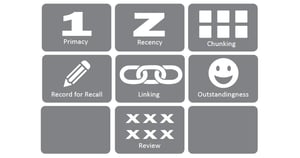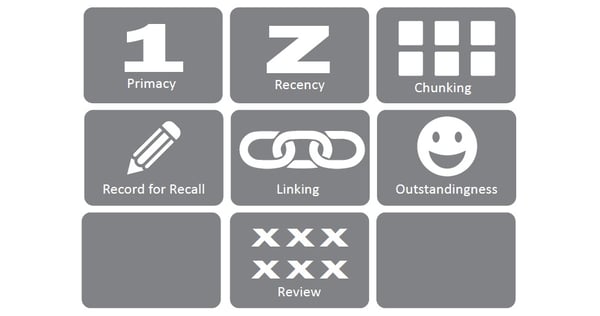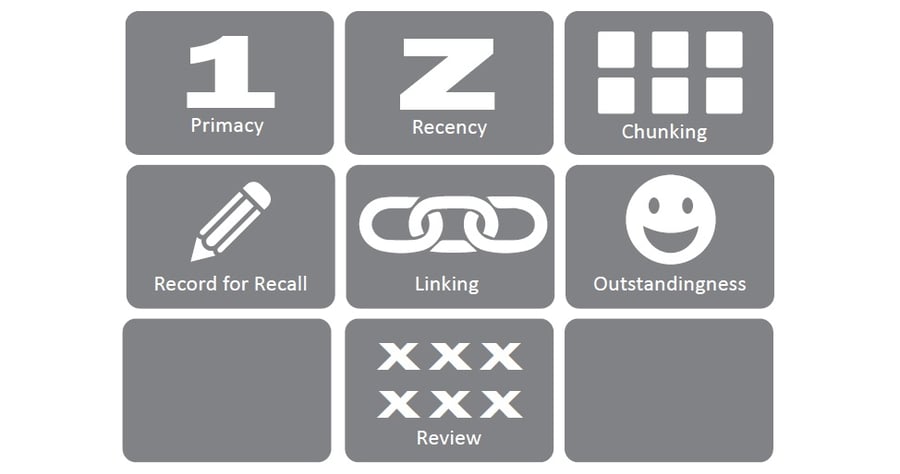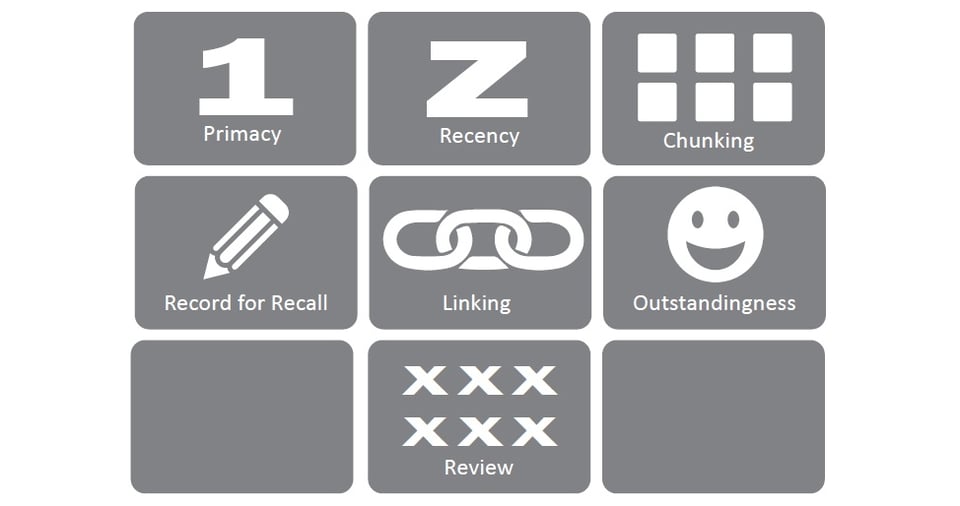


Over the next month, I'll be sharing some of the tips from Becky's latest book "Creative Training: A Train-The-Trainer Field Guide." This is the first in a series so stay tuned and let us know how you're planning to implement them in your next training session by leaving a comment below or sharing with your network! This first topic is great to keep in mind as you design your next course as well as to improve your own learning retention. There are distinct training methods that help learners remember the content you’re presenting. We’ll cover each memory technique and give you an easy visual to reference. It’s called the window pane. Each pane includes an image and a keyword that helps trigger the concept pictured in the image.
Seven Ways We Remember Anything

The primacy-recency effect states that we tend to remember the first and last things in a series with the recent items being most vividly recalled.
Information is more easily retained if it’s chunked into manageable pieces. Bell Labs created the North American phone system using this method. The seven digits are broken into two chunks of three and four digits to make the numbers easier to remember.
Writing in a workbook and taking notes by hand increases retention. It has been shown that taking notes on a laptop is not as effective as handwritten notes.
It helps to remember things when you try to connect what you’re teaching with something learners experienced in the past. Create a metaphor for the content your learners just learned. Visual aids and props are also great ways to create links. For example, use a magic trick and relate it to all the steps that go into the concept you’re teaching.
6. Outstandingness/Intensity
The more outstanding or intense the material that is taught, the more likely it will be retained. A student will learn more from the real thing, such as reading a book, vs watching the movie. Students also learn more by actively participating and doing activities vs simply hearing about them from a lecture. The sense of smell is the biggest trigger for memory. Curiosity is a part of intensity has proven to have a significant influence on academic performance.
Here are a few ways to increase curiosity in the classroom:
7. Review
Concepts most often repeated are best remembered. Use several different approaches to cover the same content. Participants do not learn complex concepts after one exposure. Learners remember concepts after they apply what they’ve been told and shown. Every time practice occurs, learning continues.
Help People Learn Twice as Much in Half the Time
The Bob Pike Group has helped 95% of Fortune 100 companies with measurable training and performance solutions. There are several workshop options to choose from:
Learn how to write effective training objectives with this “Free Guide: 5 Tips for Writing Effective Objectives.”
Don't miss out on updates and chances
to sharpen your skills with participant-centered learning.




3740 N Chestnut St #113 - Chaska, MN 55318-3053